My new adventure has taken me to Salzburg, Austria. I knew nothing about it, but then I decided to visit it and I was so thankful I did. This is a magical, enchanting place, it is filled with music.
Location
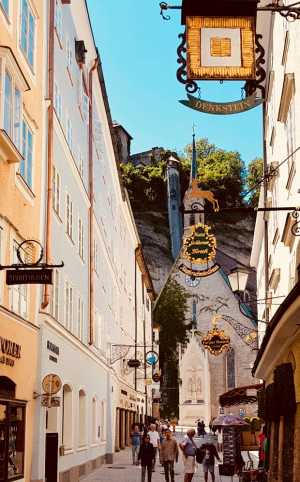
I loved the fact that Salzburg is cuddled up in the eastern Alps, close to the border with Germany, and is surrounded by three peaks: Mönhsberg, Gaisberg, and Kapuzinerberg.
It is on the banks of the River Salzach.
It is so close to Germany in fact, that that’s exactly how I got there. Since I was living in Munich I thought to myself, I want to see something grand. So, I went to the central train station and bought a Bayern Ticket (the cheapest way to get there).
To my surprise, the train took only 2 hours and it makes it possible to consider it a day trip destination.
The town is located on the site of the former Roman settlement of Iuvavum. Salzburg was founded as an Episcopal see (the area of a bishop’s ecclesiastical jurisdiction) in 696 and became a seat of the archbishop in 798.
Salzburg’s historic center (altstadt) is renowned for its Baroque architecture and is one of the best-preserved city center north of the Alps. It has 27 churches.
It offers culture
One of the first things I learned is that Salzburg means “Salt Fortress”. The reason behind its name is simple: under the Roman Empire salt mines were established nearby.
In the 14th century, it split from Baviera and in 1816 it was absorbed by Austria.
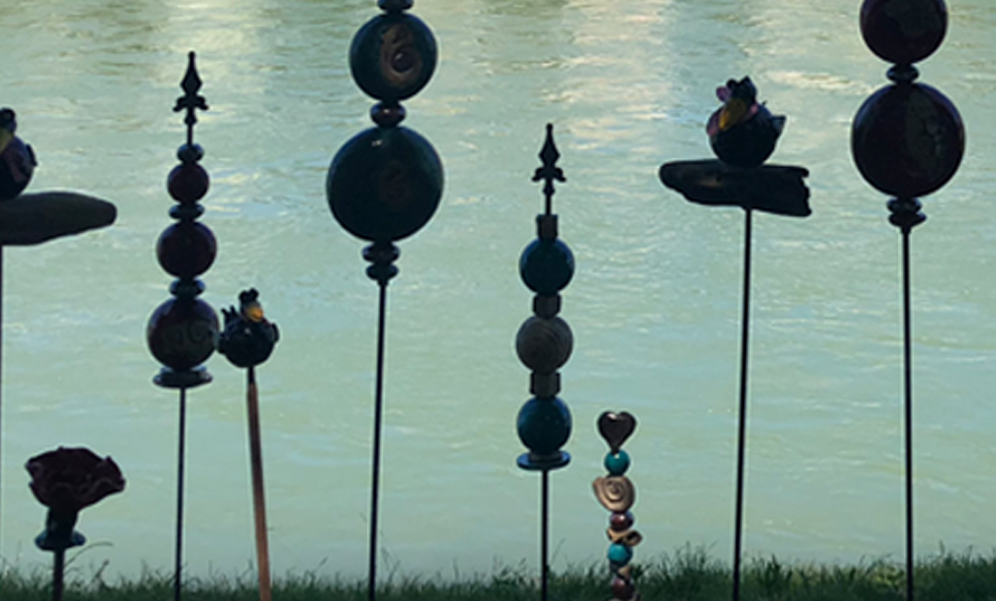
The city of Salzburg offers art, culture, historical and modern sights, thrilling events, living tradition, pleasure, relaxation, and great food.

Most of Salzburg’s tourist attractions are in Altstadt (the Old Town). It is a listed UNESCO world heritage site, full of quaint squares, fountains, Baroque churches, medieval buildings, wrought-iron signs, and much more.
As I found out it is so much more than the place where Wolfgang Mozart was born.
This city is split by the River Salzach, and most of its residents live in the 19th-century New Town on the river’s east bank. The city took shape in the Middle Ages.
Here, the old tradition of craftsmanship is cherished. Regional authentic craftwork. Craftsmen who have mastered their art and know all about the substance of the product.
It has a burgeoning art and cultural scene. A perfect example is the world-famous Salzburg Festival takes place each summer in the city and has an incredible program of classical music.
It’s all about Mozart
At some point or another, I had to see something that belonged to the great W. So, I obviously went to the house he was born in and where he later lived. I actually saw his first instruments and a lot of family history.
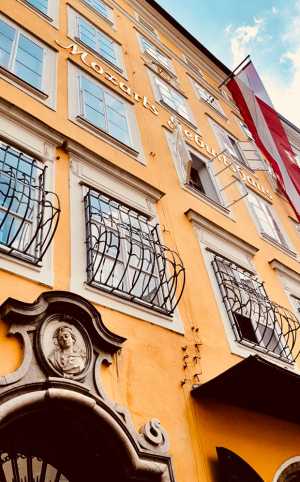
And, if you ask visitors from around the world about their most memorable Salzburg experiences, it’s fair to assume that practically every one of them will mention W. A. Mozart at some point or other.
Ok, let me be detailed about this. The Getreidegasse number 9 will always draw attention because it is the house where Wolfgang Amadeus Mozart was born.
Actually, Salzburg’s most famous son came into this world on 27 January 1756. His family actually lived there for 26 years, in an apartment on the third floor.
From 1773 to 1787, the Mozarts lived at the “Dance Master’s House”. It was a spacious eight-room apartment on the first floor and is now a museum. The exhibition provides interesting facts about the history of the house, Mozart’s Salzburg years, and the life of the Mozart family.
During my short visit to this magnificent city, I learned a few fun facts about Mozart.
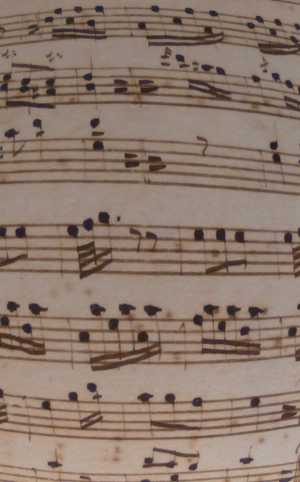
1. Mozart was officially a knight. Leopold, Wolfgang’s dad, was a very modern guy but he wanted his kids to be raised to the nobility. And indeed, the Pope dubbed Wolfgang a “Knight of the Golden Spur”.
2. The color of his eyes was dark brown.
3. Mozart lived to the age of 35 and he spent 10 years on the road. He used to say that “travel shapes you” and he said this for good reason. As a small child, Mozart made it all the way to London. In total, he traveled for 3720 days of his life.
Ok, so much for Mozart. Continuing with the many interesting things I found out one of them is that visitors in 2018 will be surrounded by the festivities accompanying the 200-year anniversary of the beloved Christmas song “Silent Night! Holy Night!”.
In 1816, Joseph Mohr composed a poem filled with hope. Two years later Franz Xaver Gruber composed the melody, not realizing that this simple Christmas Carol would turn into a melody of hope around the world.
Breathtaking
As I said before, this city is filled with music but it is so much more. It is beauty.
A perfect example of this beauty is to be found at Mariabellplatz. It is a beautiful garden in the center of the city where the Sound of Music was filmed. The gardens are incredible!
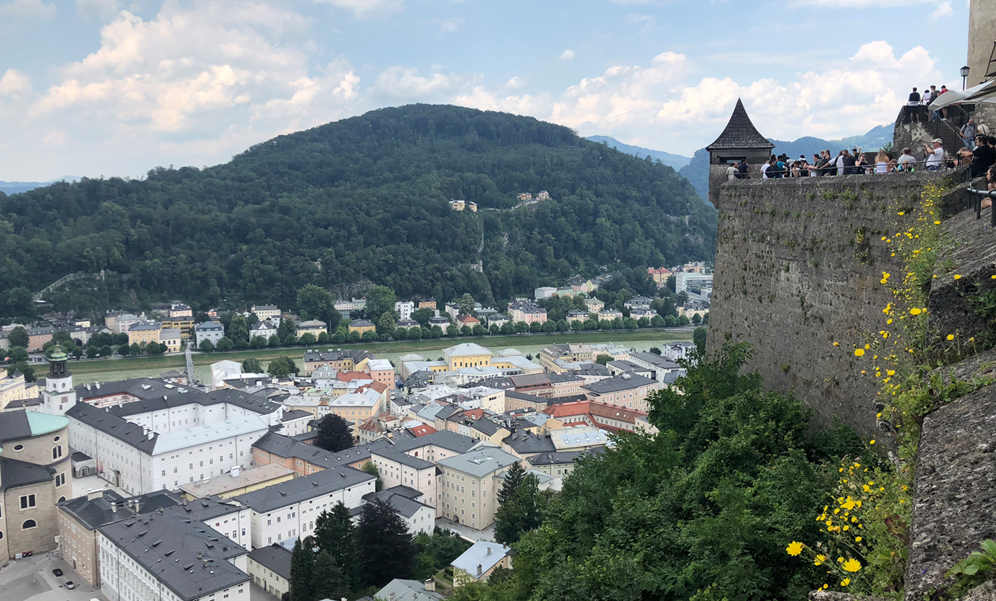
Another amazing find was the Festung Hohensalzburg (Hohensalzburg fortress). You get there by riding the cableway. It is the best-preserved medieval fortress in Central Europe. The view is remarkable. To the north is the city with its church spires and to the south is the Alps.
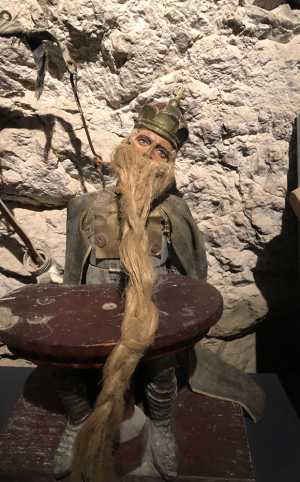
In my point of view, one of the many interesting corners within the fortress was the Marionette Museum.
Here you can find items from Mozart’s Magic Flute and the Sound of Music, as well as events of Salzburg’s regional history, such as the Peasant Uprising. At the entrance, you are personally greeted by a 3-D animation of Archbishop Wolf Dietrich.
It is important to note that Salzburg is the fourth-largest city in Austria (after Vienna, Graz, and Linz) and the capital of the federal state of Salzburg.
Its “Old Town”, with its world-famous Baroque architecture, is one of the best-preserved city centers in the German-speaking world and since 1997 it has been a UNESCO World Heritage Site.
The best way to get around Salzburg is on foot. But obviously, there are buses that take you everywhere.
Conveniently, bus tickets can be bought on the buses from the bus driver. But, if you have time, buy the tickets in advance at a “Trafik”, since they are then significantly cheaper.
Family-friendly
Salzburg is very family-friendly. Families everywhere. Children’s laughter in the background.
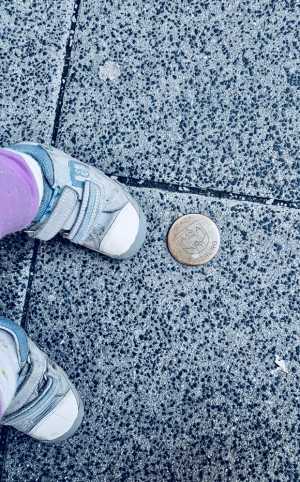
On the one hand, the city isn’t big so that exploring Salzburg is literally child’s play. On the other, the history and personalities of this City of Mozart feature countless exciting and fascinating milestones.
When I was there I saw so many great things. I loved the real-life chessboard, where people were actually playing. They stood there, under the sun for hours, playing. It was like a scene from Harry Potter.
People were just enjoying the time, the city. Letting life take its course. That is definitely a lovely sight.
Changing subject, for centuries, Salzburg was an immensely important center of ecclesiastical power. The prince-archbishop was the leader of both church and state. He was a man who possessed money, power, and influence in Rome.
As a matter of fact, for more than 1100 years, Salzburg was a church-state where secular and church power was unified in the role of the prince-archbishop. Baroque squares, magnificent collections, and an impressive wealth of churches and abbeys attest to the legacy of these prince-archbishops in terms of architecture, art, and culture.
Thanks to natural resources that included gold and salt, church-state Salzburg became extremely prosperous. The Salzburg of today is heir to this wealth and splendor. A large number of churches and magnificent buildings in such a relatively confined space truly makes Salzburg a “city of churches”.
I think that the church towers and the cathedral dome, invoke images of Rome itself.
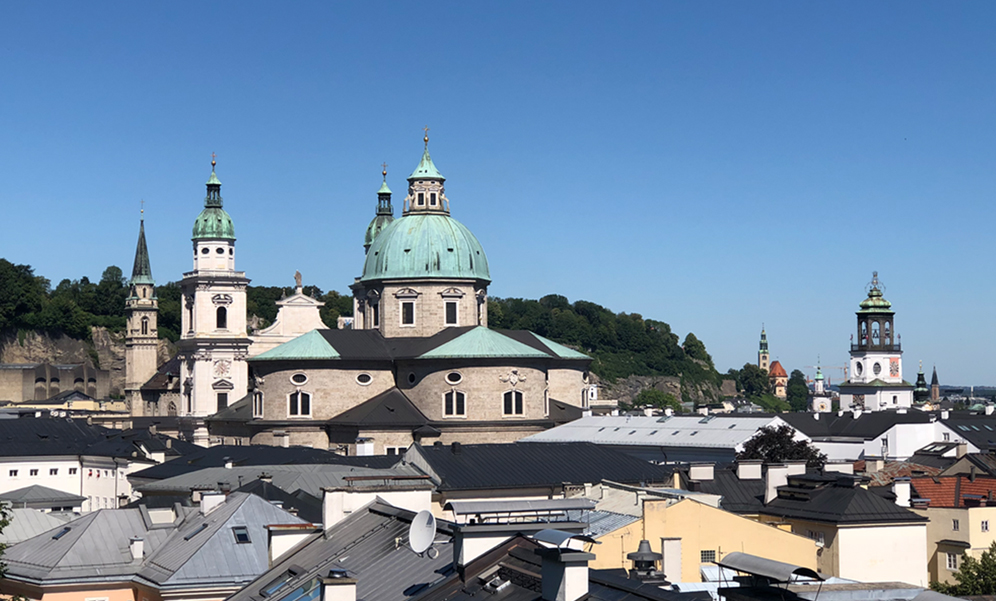
Then came the Sound of Music
During my short trip, I learned that the Von Trapp story, the story behind the Sound Of Music, was actually true.
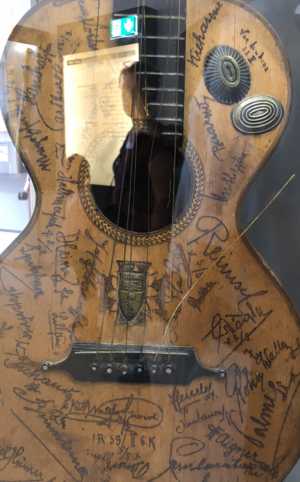
It was the story of Maria Kutschera, a young novice. The story is as follows: she moves in with the von Trapps as the children’s governess and shortly afterward marries the widower father of the family.
In 1925, Georg von Trapp a submarine commander in the Austrian navy moved with his seven children to Salzburg. Sadly, Georg von Trapp’s first wife, Agathe Whitehead, passed away a few years earlier, in 1922.
In Salzburg, the widower looked for a governess and teacher, above all to take care of his second-eldest daughter, Maria, who suffered from a heart condition.
So, the abbess of Nonnberg Abbey placed Maria Augusta Kutschera in his service. The baron and the novice fell in love. They had three children together.

The Trapps lost most of the family fortune when their bank failed in 1933.
From that point on, the family was compelled to live more modestly and actually rented out the grander parts of their home. Together with her husband’s children, Maria founded a family choir.
Shortly thereafter, Austria was annexed by Hitler’s Germany in 1938. Georg von Trapp was called up to serve in the German navy.
But he denied it and decided to emigrate via Brunegg in Switzerland and London to the United States.
The Trapps put down roots in Stowe, Vermont. It was from here that they set out on a concert career spanning the better part of 20 years.
The legend of the Trapp family lives on in the 1965 movie cult classic “The Sound of Music”. For those hard-core fans, it is possible to visit all shooting locations!
Last Words
So, what can I say? Here there are medieval areas, bright and colorful floral gardens, and modern architecture, all just a few minutes walk from each other.
Salzburg is so many things. Salzburg is one of the most charming cities in Austria. If you haven’t been to Austria it should definitely be on your list. It is true Mozart’s influence is in every single corner, under every rock, behind every wall and door, and under each sealing. Here, July Andres skipped across that meadow in The Sound of Music. As I saw for myself, the streets have always been alive with the sound of music.


